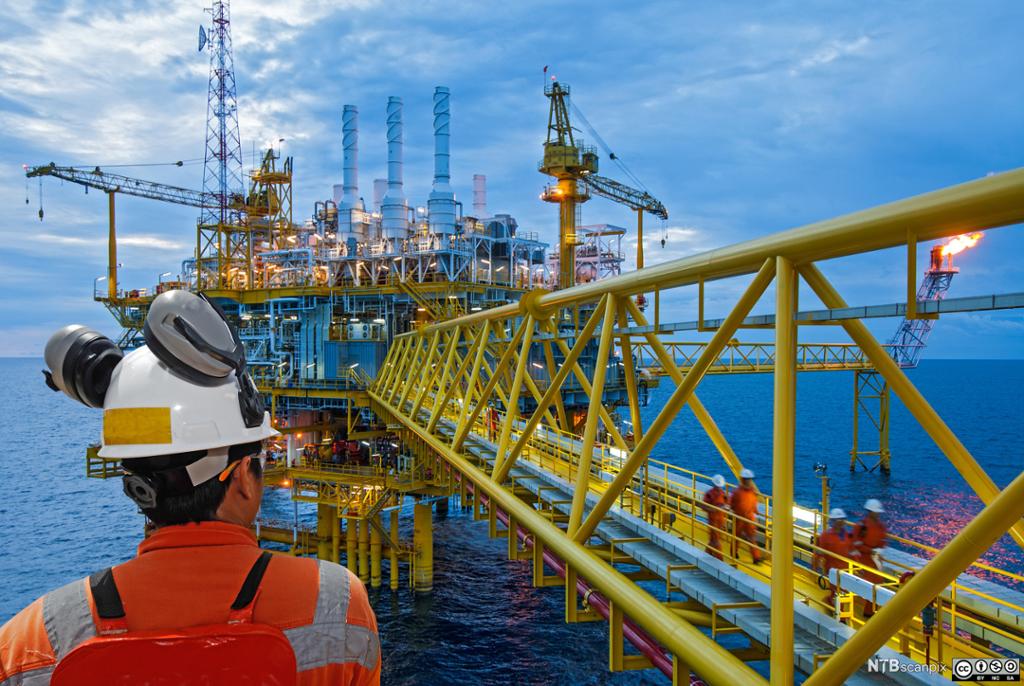Crude Oil - Downstream

Crude oil downstream
Crude oils differ a lot. Crude which is extracted under conditions of considerable pressure is usually light and flows easily, while high viscosity crude is found under conditions of low pressure. The former usually contains a considerable amount of dissolved gas, while the latter contains little or no dissolved gas, but a lot of sulphur. North Sea oil is usually light and is considered to be of high quality. The variation in types of crudes means that they will vaporise at different temperatures, and this is an essential property when entering the fractionating tower at a refinery onshore.
The crude feed is preheated before it enters the fractionator. The hot feed is pumped into the fractionating tower and a mixture of vapours is formed which will vaporise at different levels depending on the individual boiling points. The most volatile fractions will come out at the top (refinery gas and LPG), while the heaviest long-chained fractions will leave the tower at the bottom. The different fractions will be separated by means of trays in the fractionating tower into the basic fractions.
In a simple refinery this will mean six basic cuts or fractions:
- LPG (liquefied petroleum gas)
- Gasoline
- Naphtha
- Kerosene
- Gas Oil
- Residue
Take a look at these videos about crude oil refining.
Fractional Distillation (YouTube)
Cracking is a process where long-chained hydrocarbons are cracked or broken to form smaller molecules. This process is carried out to increase the yield of medium or residual cuts. This is accomplished in different ways, such as thermal cracking or catalytic cracking.
A catalyst is used to speed up the process. In catalytic cracking a medium or residual cut from a crude distillation unit is preheated and pumped into the reactor. On its way to the reactor, a suitable catalyst is mixed with the hot feed and they are both carried to the reactor where the cracking takes place and the long-chained hydrocarbons are broken or converted into two or more smaller hydrocarbons. As stated the catalyst speeds up this process, but it does not change chemically. So the catalyst flows back to the regenerator where the carbon deposited on it during the process is burnt off. The ‘cleaned’ catalyst is then again mixed with hot feed from the preheater.The cracked mixture leaves the reactor and flows to the fractionating tower where it is distilled. (See fractional distillation)
The majority of the distilled and cracked refinery products end up as fuel of one kind or another. They include fuels like gasoline (petrol), diesel and aviation fuels. They are also used in the production of lubricants, waxes and solvents. However, a considerable amount is also refined into petrochemicals, which are any crude oil product derived from crude oil and natural gas. Petrochemicals are used in the manufacture of numerous products such as synthetic rubbers and synthetic fibres, polyester, plastics, detergents, fertilizers and pesticides. Petrochemicals also have an enormous impact on the production of our food, our clothes, health care equipment and on how our homes are built.
Comprehension
Complete the sentences using information from the text.
- Under conditions of low pressure, _______________________ is found.
- North Sea oil is ______________________________.
- Different types of crude oil can be separated by ________________________ because they _________________________.
- The __________________________ come out at the top of the fractionating tower.
- The __________________________ come out at the bottom of the tower
- Cracking is _____________________________________.
- A catalyst is used ___________________________.
- Some examples of products from crude oil are ____________________________________.
- Petrochemicals are used to make ___________________________________________, for example.